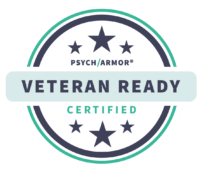How Trauma-Informed Yoga Can Help You
Yoga is a terrific method for reducing stress, providing essential nervous system support, and reducing tension. Various yoga styles also make the practice now more accessible to a greater number of people than ever before. However, if you’re in recovery and processing past trauma, you might feel more comfortable starting with a trauma-informed yoga class. Here’s why.
What Are the Benefits of Yoga?
This modality can be much more than exercise, and researchers now understand how a regular yoga practice provides more balance and support to all wellness efforts. According to the National Center for Complementary and Integrative Health, “studies have suggested possible benefits of yoga for several aspects of wellness, including stress management, mental/emotional health, promoting healthy eating/activity habits, sleep, and balance.” This agency, which is a division of the U.S. Department of Health and Human Services, details additional benefits and features of consistent practice and research support.
The consistent movement combined with focused breathwork exercises in yoga helps lessen the reaction of the sympathetic nervous system, responsible for our “fight/flight/freeze” response. Instead, the practice prompts the parasympathetic nervous system into action, issuing the “rest and digest” response. This helps lower stress and increase resilience.
Other studies also indicate that yoga:
- Helps reduce symptoms of anxiety and depression.
- Is one of the easiest ways to stimulate the vagus nerve, which “influences your breathing, digestive function, and heart rate, all of which can have a huge impact on your mental health.”
- Promotes better sleep, reduced chronic pain, and improved mind-body awareness.
The Cleveland Clinic notes that trauma-informed yoga (also known as trauma-sensitive yoga) helps an individual “become more aware of what’s going on in your body. Once you tap into that, you can work on releasing built-up emotions, stress, and tension.”
Using Yoga to Help Release the Trauma
The Trauma-Informed Care Implementation Resource Center (TICIRC) defines trauma as “exposure to an incident or series of events that are emotionally disturbing or life-threatening with lasting adverse effects on the individual’s functioning and mental, physical, social, emotional, and/or spiritual well-being.”
People with trauma protect themselves in various ways, including building up chemical and physiological defenses, which often last for decades. The National Library of Medicine indicates that “the impact of trauma can be subtle, insidious, or outright destructive. How an event affects an individual depends on many factors, including characteristics of the individual, the type and characteristics of the event(s), developmental processes, the meaning of the trauma, and sociocultural factors.”
Over the years, chronic stress and trauma decreases the number of neuronal connections in the brain, making it even more challenging to self-regulate emotions and avoid fear-based memories.
Fortunately, scientific advances continue to help people break the trauma and addiction connection. The TICRIC notes that “trauma-informed approaches to care, including relational healing and trauma-specific treatments, can help patients begin processing their experiences in a healthy way.” Successful approaches include EMDR, brainspotting, and trauma-informed yoga.
People interested in a trauma-sensitive yoga class are best served by working with the following types of professionals:
- C-IAYT (Certified Yoga Therapist)
- TCTSY (Trauma Center Trauma-Sensitive Yoga Instructor)
While some other yoga teachers might have additional training in trauma issues, a certified instructor usually has additional medical education. Which is helpful, because the practice is frequently used in conjunction with other modalities, such as:
- Cognitive-behavioral therapy, complicated grief therapy, and talk therapy
- Addiction, eating disorder, and mood disorder rehabilitation
- Demographic-specific assistance programs, such as those to help veterans and first responders with PTSD.
The Center for Trauma and Embodiment at the Justice Resource Institute in Massachusetts also provides a trauma-sensitive curriculum for domestic violence and rape crisis centers and survivors of terrorism aid services. In this video, co-founders and co-directors Dave Emerson and Jenn Turner explain the value of using yoga as another tool to help people move on from trauma into a safe place of healing.
What Might Happen in a Trauma-Informed Yoga Class
The primary goal of this method is to help individuals create more awareness of and comfort in their bodies. Known in the medical community as a “body-first” approach, trauma-informed yoga allows for a person to let go of buried emotions and layers of stress and tension.
An instructor creates an environment that ensures peaceful security. While some techniques vary, the majority of teachers sit at the front of the room and explain how the session will go so students know what to expect at all times. Instructors also refrain from using certain atmospheric enhancements such as incense, essential oils, candles, and music: this helps prevent potential triggers. Cues are suggestions with many options, each person feels they’re in total control of the experience.
Poses within the sequence are kept to a minimum so participants have plenty of opportunity to breathe and acknowledge the sensations in their body in a focused way. The Cleveland Clinic indicates this is beneficial because “when your mind is racing, your muscles are tense and you’re always on edge. As you combine movement and breath, you start building back mind/body connections.” Once this happens, other therapeutic applications are more accessible.
Try More Holistic Possibilities for Wellness at Seabrook
The Seabrook Model provides a foundation for successful recovery by focusing on community, continuity, and structure. This includes designing customized treatment plans with appropriate holistic methods and other progressive solutions to help people with trauma and addiction resolve their past and create a future full of hope and stability. You deserve this comprehensive care, so ask one of our admissions specialists how we can help.




